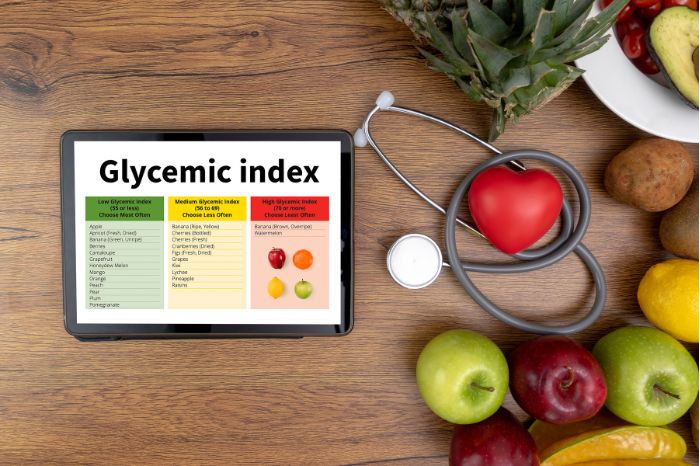Why You Should Consume Low Glycemic Foods?
- Low glycemic foods are the foods that are less likely to raise blood sugar levels.
We have listed a list of low glycemic foods to familiarize you with what is beneficial for you if you are a diabetic person.
Table of Contents
Why not turn to these foods instead of eating foods that raise your body’s glucose level?

- Low glycemic foods are those that have a low value of the glycemic index. These foods are ideal for weight loss and blood sugar.
Best Low Glycemic Foods
Many people in their middle age start facing the problem of a high glycemic index. The body’s sugar content start increasing due to low level of insulin production.
- These foods are multi-functional to help a person gain many advantages from them. These foods help lose weight and keep the body resistant to type 2 diabetes and many degenerative diseases.
Why you should follow the low glycemic diet?
According to Mayo Clinic studies of low-GI diets have shown varied results. In general, they have shown a low-GI diet may be helpful for:
- Need to lose weight or maintain a healthy weight
- Want to keep blood sugar levels from going too high or low as part of a diabetes treatment plan
- Need to lessen the risk of diabetes or heart disease.
- Need to control your cholesterol level and lower your blood pressure.
Glycemic index
- The glycemic index is a ranking system that affects the body’s blood sugar level. It measures the glycemic value of foods.
Scientists use this to know which food will affect blood sugar levels and in which ways.
The carbohydrate-rich diet provides simple sugars after a breakdown that passes into the bloodstream.
- It elevates the blood sugar level leading to obesity and type 2 diabetes. Some foods have a low glycemic index and help in type 2 diabetes by lowering the body’s sugar level.

Based on the glycemic index (GI), foods are classified as follows:
- High GI foods: Potatoes, white bread, and white rice.
- Medium GI foods: Whole-grain wheat bread or rye bread, sweet corn, bananas, raw pineapple, breakfast cereals, and multigrain, raisins, and cherries.
- Low GI foods: Kidney beans, chickpeas, lentils, green vegetables (or non starchy vegetables), most fruits, and raw carrots.
Why the glycemic index of the food differs?
This depends on how food is processed or made.
- Oatmeal has a glycemic index of 79 which is high but steel-cut rolled oats have a glycemic index of 55 which makes it low-GI food.
For example types of yogurt is available in the market like Greek yogurt, kids yogurt etc. and they vary in the glycemic index because they are made differently.
- In kids, yogurt sugar syrup is mixed to enhance the sweet taste.
Low-glycemic foods
Oats
Scientists have reported a GI score of 55 for oats. This food has an excellent effect on raising blood sugar levels.
- Eating oats in your breakfast is advised as it has multiple benefits.
Beta-glucan is present in oats, which helps lower the bad cholesterol level of the body.
- The best way to eat oats is to eat them in porridge.
Add milk and oats to a pan and heat it with constant stirring. When the mixture becomes thick, it is ready to eat.
Chickpeas
Chickpeas, also known as garbanzo beans, are excellent low-glycemic foods with a score of 28 on the GI scale.
- It is the best alternative to potatoes because they raise blood glucose levels. With multi-nutrients content, chickpeas offer several benefits to human health.
They have 11.8g and 10.6 g per cup of protein and fiber, respectively. Besides this, it is an excellent calcium, potassium, and folate source.
Multiple recipes are available that include chickpeas as a major ingredient.

Carrots, broccoli, and cauliflower
Carrots-one of the significant source of beta carotene scores only 39 on the GI scale.
- Eating raw carrots or boiled ones is the best way to maintain the body’s glycemic index.
Not only this, but its beta carotene content maintained eye health.
- The plant-based food contains antioxidants that support the body’s cells and reduces the risk of many degenerative diseases.
Broccoli and cauliflower also come with significant nutrients and fight against the body’s high sugar and cholesterol levels.
Lentils and beans
Lentils scores 32-33 on the GI scale.
- It is reported that using kidney beans and lentils in a daily diet remarkably lowers blood sugar levels.
One cup of lentils has 18g of proteins and 16g of fiber.
Kidney beans are versatile low-GI foods with a GI score of 24.
Kidney beans help lowers the sugar level in many ways. They are an excellent aid in the weight loss journey.
- Both lentils and kidney beans are rich in potassium and other nutrients. Both will be a great addition to dinners and lunches if added to different recipes.
Health benefits of low glycemic foods
Here we have provided a list of the best and readily available low-glycemic foods.
One can easily enjoy them as raw, boiled, or steamed food or after making different recipes with other ingredients.
Now come to some benefits of these foods.
- The top advantage of using a low GI diet is maintaining blood glucose levels. It reduces the sugar content, thus helping in providing resistance against type 2 diabetes.
- These foods have some other essential nutrients like oats have beta-glucan that lowers the body’s cholesterol level to keep the body away from heart attack and plaque formation. It will, in turn, maintain body weight and remove extra fat deposits as it lowers the cholesterol and sugar content of the body.
- Food scientists have noticed maintained blood pressure in people who use these low GI diets daily.
- Studies have reported that eating high GI diets like fast foods, fried meat, cream, etc., may increase the risk of cancer development when compared to low GI diets.
- All these benefits are linked to the other nutrients in low GI foods, including proteins, fiber, phosphorous, folates, etc.
The overall quality of food matters rather than taking medicines for one purpose only.

FAQs
Can I eat eggs in diabetes?
Yes, eggs can be taken while you have diabetes. Eggs have a low glycemic index; that’s why they come on the list of low-carbohydrate foods.
- They are rich in protein and thus have a shallow effect on blood sugar levels. However, eating eggs in bulk may raise your cholesterol level.
Is milk a low GI diet?
Yes, taking milk without added sugar is a low GI diet. Skimmed milk and full fat have a GI score of 37 and 39, respectively. Milk is also an excellent calcium source that strengthens bones and teeth.
- However, the GI score varies according to milk’s different brands and fat contents.
Conclusion
Now we have come to the point that eating low-GI foods keeps you fit and healthy.
- It lowers the body’s cholesterol and blood sugar levels and keeps you away from many other diseases.
These foods are best suited to those with a diabetic history, who are at risk, or who already have developed diabetes.
- However, we recommend using low GI diets only sometimes. A person should have the right healthy choices before making any diet plans.
These foods do not have complete nutritional ingredients like fats, fibers, sugars, and proteins.
- Some age groups, like kids and adults, need other ingredients too. So a person should have a proper diet plan that includes an optimum amount of all types of food.


